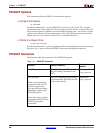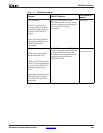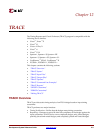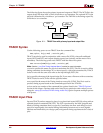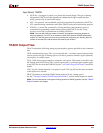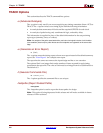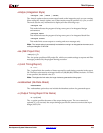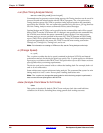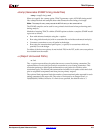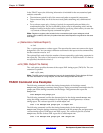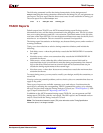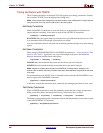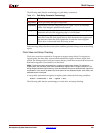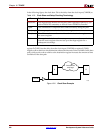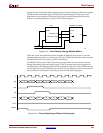
216 www.xilinx.com Development System Reference Guide
Chapter 12: TRACE
R
–run (Run Timing Analyzer Macro)
–run macro.xtm [design.ncd] [constraints.pcf]
Commands used to generate custom timing reports with Timing Analyzer can be saved in
a macro file and run in batch mode with the TRACE program. The –run option uses a
Timing Analyzer macro file (XTM) to produce timing reports based on the commands
specified in the XTM file. The –run option also generates a log file (macro_file.log) that lists
all of the Timing Analyzer macro commands and any status messages.
Optional design and PCF files can be specified on the command line and will be opened
before TRACE runs the XTM macro file. If a design is not specified on the command line,
the XTM file must include the macro command to open a design. If an output report
filename and type are not specified in the macro file, TRACE generates an XML timing
report (TWX) file by default and names the report Timing1.twx. When multiple timing
reports and generated by the macro file, TRACE uses the same naming convention:
Timing1.twx, Timing2.twx, Timing3.twx, and so on.
Note:
For information on creating an XTM macro file, see the Timing Analyzer online help.
–s (Change Speed)
–s [speed]
The –s option overrides the device speed contained in the input NCD file and instead
performs an analysis for the device speed you specify. The –s option applies to whichever
report type you produce in this TRACE run. The option allows you to see if faster or slower
speed grades meet your timing requirements.
The device speed can be entered with or without the leading dash. For example, both –s 3
and –s –3 are valid entries.
Some architectures support minimum timing analysis. The command line syntax for min
timing analysis is: trace –s min. Do not place a leading dash before min.
Note:
The –s option only changes the speed grade for which the timing analysis is performed; it
does not save the new speed grade to the NCD file.
–skew (Analyze Clock Skew for All Clocks)
–skew
This option is obsolete. By default, TRACE now analyzes clock skew and hold time
violations for all clocks, including those using general clock routing resources.



